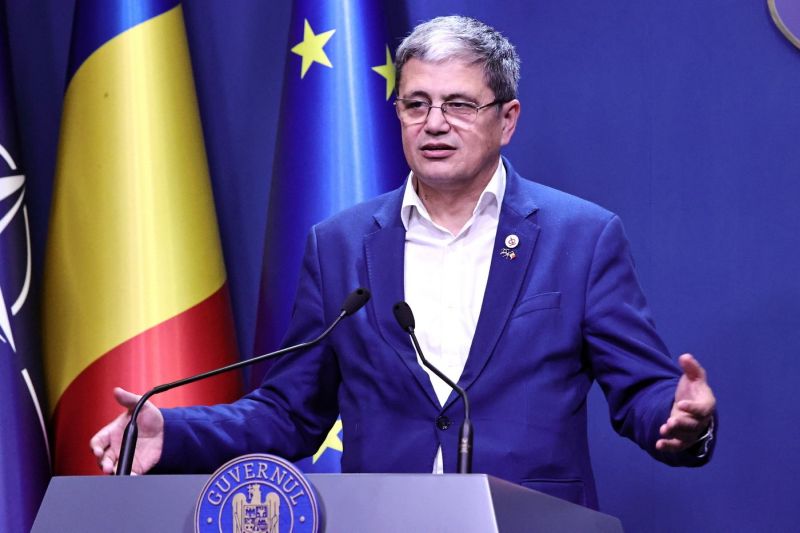
The government wants to review with the European executive the allocation of 29.2 billion euros from the PNRR in the sense of adjusting benchmarks and targets, introducing the RePowerEu section, reducing the cost of the grant and restructuring the loan, according to the emergency draft Resolution.
The government will instruct the Ministry of European Investments and Projects (MIPE) to “carry out re-negotiation procedures with the European Commission to re-approve the PNRR, adjust benchmarks and targets, introduce the Repowereu section, reduce grant amounts, loan restructuring, as well as loan applications, provided for in Art. 14 of Regulation (EU) 2021/241 of the European Parliament and of the Council”, This is stated in the draft NP, which was submitted for public discussion by MIPE.
Also, the Ministry of Finance will be instructed to “conduct review procedures at the level of the Council of the European Union.”
- SEE DRAFT GEO AND KEYNOTE HERE
Marcel Bolosh: Reduction of 2.1 billion euros is mandatory, and credit restructuring is a moral obligation

Romania has allocation of 29.2 billion euros through the National Recovery and Resilience Plan, of which €14.24 billion are grants (non-refundable European funds) and €14.93 billion are loans.
- What is subsidy reduction and loan restructuring?
Contacted HotNews.ro on TuesdayMarcel Bolosh, Minister of Investments and European Projects (MIPE), explained why the reduction of grants will be mandatory and how credit restructuring is desirable.
- “A reduction in the grant of €2.1 billion is required as a result of the increase in GDP in 2021 compared to 2020. Of the €14.2 billion, €2.1 billion is reduced as a result of GDP growth, leaving us with €12.1 billion.
- The restructuring of the public debt is a moral obligation, as the debt should finance the necessary investments for Romania, such as: energy independence, food crisis, economic competitiveness and support of the business environment.
- From loans, respectively, from 14.9 billion euros, through restructuring, you can get savings (as a result of the transition to the policy of consolidation of investments) in the amount of 4.2 billion euros. Instead of these investments, we can introduce targets from RePowerEU.”, This was stated by Minister Marcel Bolosh for HotNews.ro on Tuesday.
Restructuring of PNRR loans: how 4.2 billion euros will be used and what to do if the EC does not agree
Minister Bolosh also explained how the amount of 4.2 billion euros that could be obtained by restructuring loans from the PNRR could be used more precisely.
“The money can be used:
- 1. For the energy independence of Romania: solar parks, wind parks, hydropower infrastructures (ex. CHE Islaz, CHE Pascani, etc.);
- 2. Investments in irrigation canals;
- 3. Investments in large enterprises
If the Council of Europe does not accept (the European Commission), then we must increase the amount of the loan.” Minister Bolos also stated.
This was stated by Minister Bolosh earlier this month for StartupCafe.ro Romania could negotiate the introduction of investments in irrigation infrastructure in the National Recovery and Resilience Plan with a request to the European Commission to supplement the credit component of the PNRR.
Why a review of the PNRR is needed: reasons announced back in May
Minister Bolosh also explained this in May of this year the loss of €2 billion in PNRR grants is not a sanction but a consequence the fact that in 2021, Romania’s economic growth exceeded what was expected when the PNRR was drawn up, when an amount of 29.2 billion euros was allocated.
At the same time, Minister Bolosh said that “sometime in the fall, the question of revising the National Recovery and Resilience Plan (PNRR) will arise. According to him, only an increase in the prices of construction materials would give Romania the right to demand a review of some milestones, as well as the problem of pensioners with low incomes.
Source: Hot News RO
Anna White is a journalist at 247 News Reel, where she writes on world news and current events. She is known for her insightful analysis and compelling storytelling. Anna’s articles have been widely read and shared, earning her a reputation as a talented and respected journalist. She delivers in-depth and accurate understanding of the world’s most pressing issues.